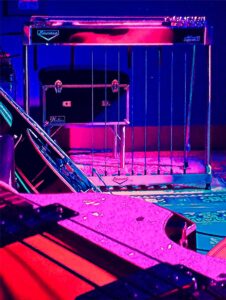As an Amazon Associate Playpedalsteel.com earns from qualifying purchases. This page contains affiliate links.
Pedal steel guitar seats are a great piece of gear to invest in, and they have become popular among steel players for many reasons. Most of them are custom, unique, and highly functional.
Having a pedal steel seat helps with storing gear, and is also physically helpful for playing the instrument. They are comfortable to play and sit on, and owning one can certainly be helpful in the long run.
A pedal steel guitar seat provides a comfortable place to sit while playing, and allows players to efficiently store their pedal steel accessories. Many players will often put their bar, picks, volume pedals, extra strings, cables, tools, and more in their pedal steel seat.
These pieces of equipment and gear are easily accessible to the player, who can access it while practicing, rehearsing, or performing, as the gear usually remains stored in the seat that they are sitting on while playing.
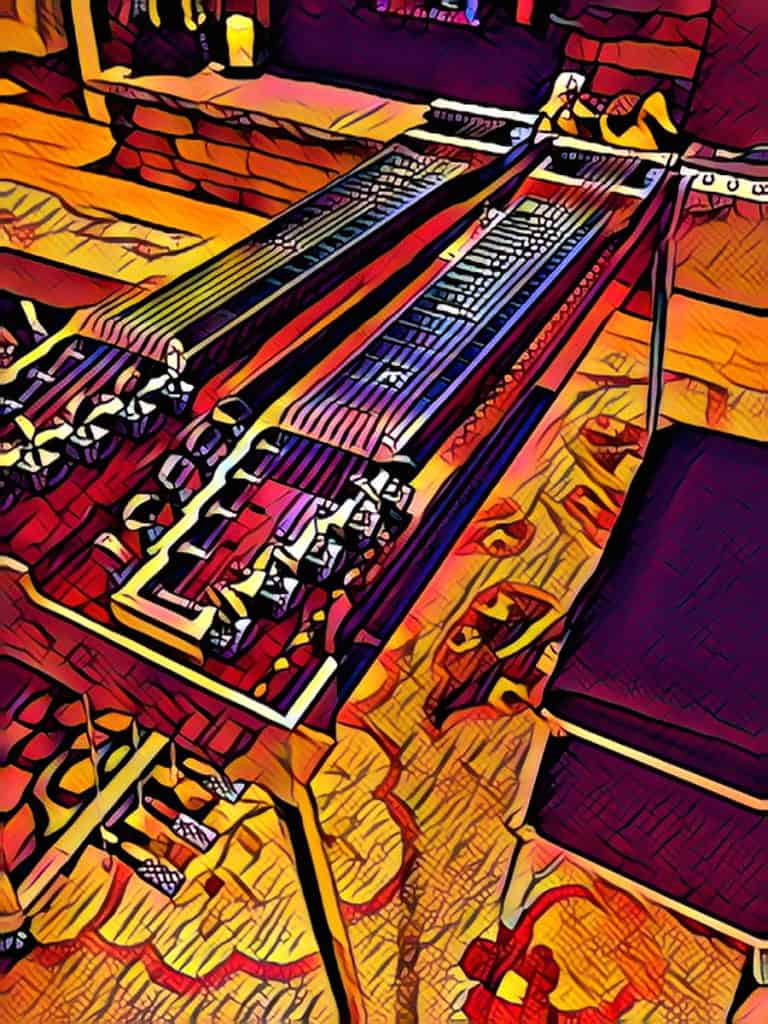
Most pedal steel seats have legs that fold up or down, so that the seat is efficient with space and packing, and they can easily be transported with a handle. Also, the seats open up like a suitcase, and this is how a player is able to store their accessories inside them.
Some pedal steel seats are made using the same materials that semi-truck seats utilize so that drivers can be comfortable for long hauls, which is great for a player that plays the pedal steel for extended periods of time, like at gigs and rehearsals. There are many benefits to owning a pedal steel seat, and knowing more about utilizing them can be a great way to make playing easier and more enjoyable…
Types of Pedal Steel Guitar Seats
Some pedal steel seats will also come with a backrest. This can improve your posture, increase your comfort while playing, and give you a place to rest while not playing.
Most pedal steel seats have compartments on the inside of their storage area, which are often sized for different pieces of gear. Depending on the brand of the seat, and modifications made by the user, they may also have more customized features.
There is a brand that I use and recommend called Walker. My Walker pedal steel seat has been durable, functional, and comfortable, and I’ve had no issues with it over the past several years of owning it.
Below you’ll see my Walker pedal steel seat, which was made by Billy Knowles in Kenansville, NC.
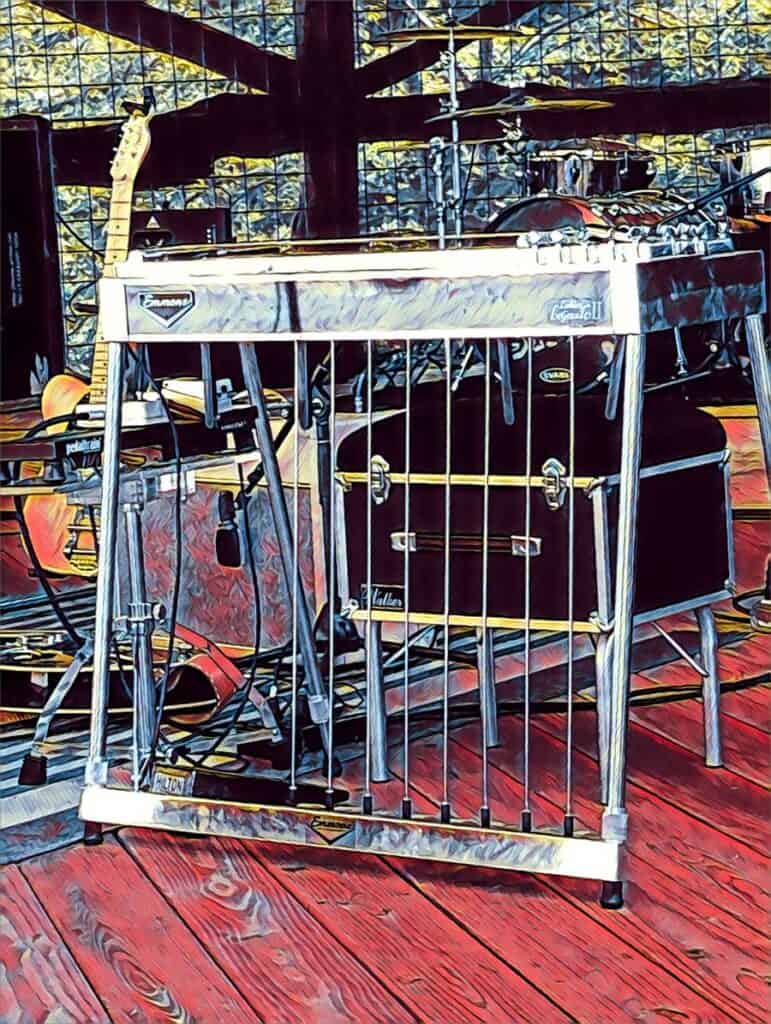
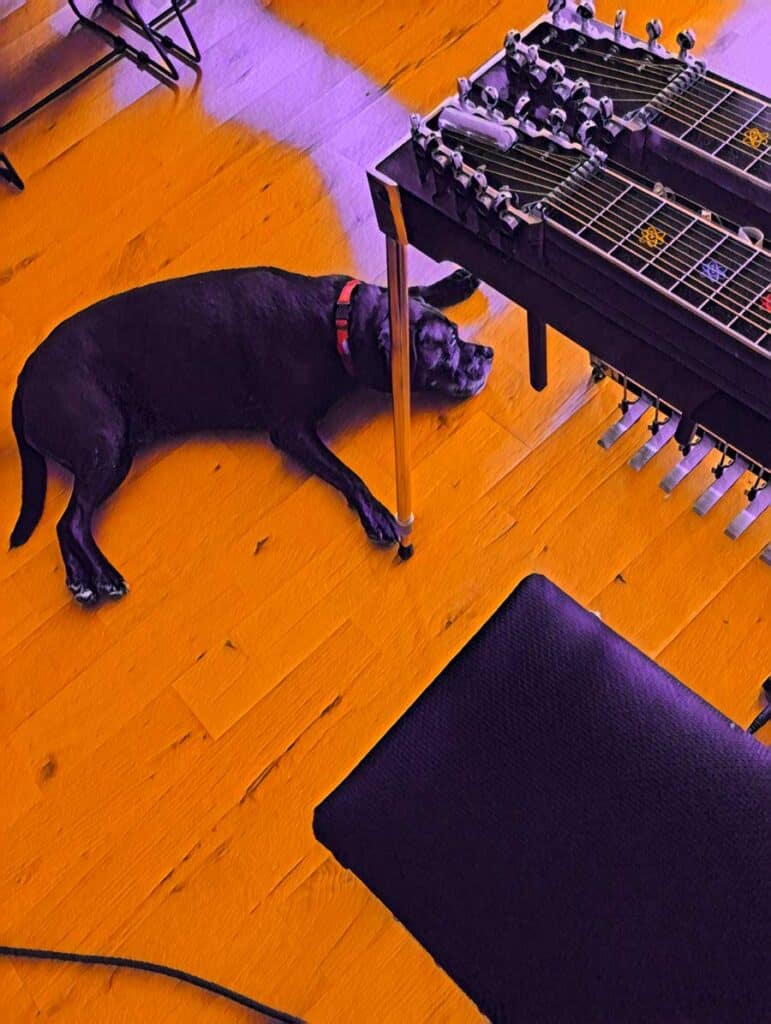
Accessories to Put in Your Steel Guitar Seat
Perhaps the biggest benefit of a steel guitar seat is its ability to hold a lot of gear and accessories. This can be great for practicing, rehearsing, performing, and touring, and many pedal steel seat owners quickly learn how convenient it can be to own one.
Here are some items that many players will store within their pedal steel seat for easy access, and you can find more information on pedal steel accessories by clicking here…
- Bars
- Picks
- Extra strings
- Volume pedals
- EFX pedals
- Cloths for dusting, cleaning, or maintenance
- Tools for tuning the pedal steel, or working on it mechanically
- Food, drinks, or snacks
- Sunglasses
- String winders
- Business cards
- Setlists and notes
- Pencils and pens
Positioning Your Pedal Steel Seat
Effective pedal steel technique requires an understanding of the physical components of playing the instrument. The body is used in various ways to get sounds out of the instrument: the left hand and arm control the bar, the right hand is used to block and pick the strings, while both feet and legs are used to manipulate the pedals, levers, and volume pedal. Positioning your steel seat properly can provide a balance and foundation that helps make these various aspects more effortless.
Since so many limbs of the body are used, playing the pedal steel can feel like sitting behind a space ship’s control center. But even though there is a lot going on simultaneously, it doesn’t have to be like rocket science. When practicing or performing, it can be very helpful to have a habit of sitting in approximately the same position each time you are behind the steel.
Advantages of Positioning
- The right hand and arm are in a relaxed and similar picking position each time. This can also be a way to ensure you are picking in an area near the pickup that provides a good tonality.
- The left hand and arm are in a comfortable position to freely move up and down the fretboard, and to keep the bar straight.
- The left leg and foot are in a comfortable position to engage the pedals and knee levers.
- The right foot and heel is in a good position to control the volume pedal, with the heel being able to move freely towards the floor and so the ankle can rock the volume pedal up or down.
- You feel centered, balanced, and comfortable when sitting behind the instrument so that you are freer to create music.
- You’re coordinating your hands/arms, eyes, legs/feet, etc. by using repetitive motions when playing so that they become habits and build on each other. You’re building muscle memory.
So what is a good position for the seat to be in? There is no set rule or position, but many players find it helpful to position it in a certain area in relation to the fretboard. I find it very useful to use the 15th fret as a guide.
3 Things To Consider for the Seat Position…
- Where the center of the seat is in relation to the fretboard.
- How far away the front of the seat is from the body or cabinet of the guitar.
- Where the belly button of the player faces in relation to the guitar.
How To Find The Position
Using these three factors, here’s a good way to ensure that your seat is positioned in the approximately the same spot each time:
- Find where the middle or center of the seat is, and put it so it is lined up with the 15th fret of the neck closest to it.
- Then, move the seat forward or backward from the beginning of the cabinet so that it is approximately the same length away from the guitar each time. Looking down from above can help with this, and I usually think of having the seat a certain amount of inches away – for me this is about 6 inches.
- Sit down on the seat, and get in your playing position…is your belly button pointing towards the 15th fret, or where you’d like it to be? This can vary for certain players and technique styles, but having the belly button centered (or facing a similar spot each time) can help ensure that you are sitting in the seat the same way each time too.
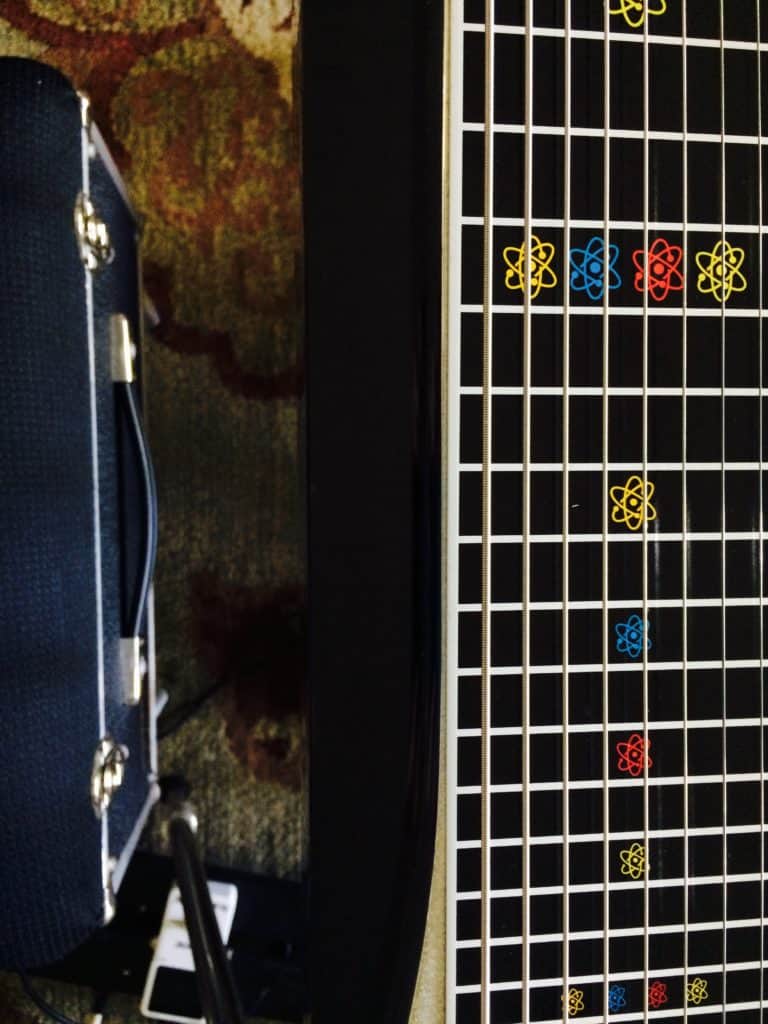
Different player techniques and different body types will require different positions. So use whatever is comfortable and works best, and this may take some experimenting. Also keep in mind how high the seat is in relation to the ground and steel – it’s helpful to have it so that the arms are parallel to the floor when playing, which can be good for relaxing the wrists too.
The steps outlined above can be a good reference for finding the seat position that works for you!
Thanks for checking out this page, hope it is helpful and makes playing more enjoyable! If you’re interested in diving deeper into playing E9 pedal steel, check out these resources and guides…
The Chord Guide for E9 Pedal Steel (E-Book, Digital Download)
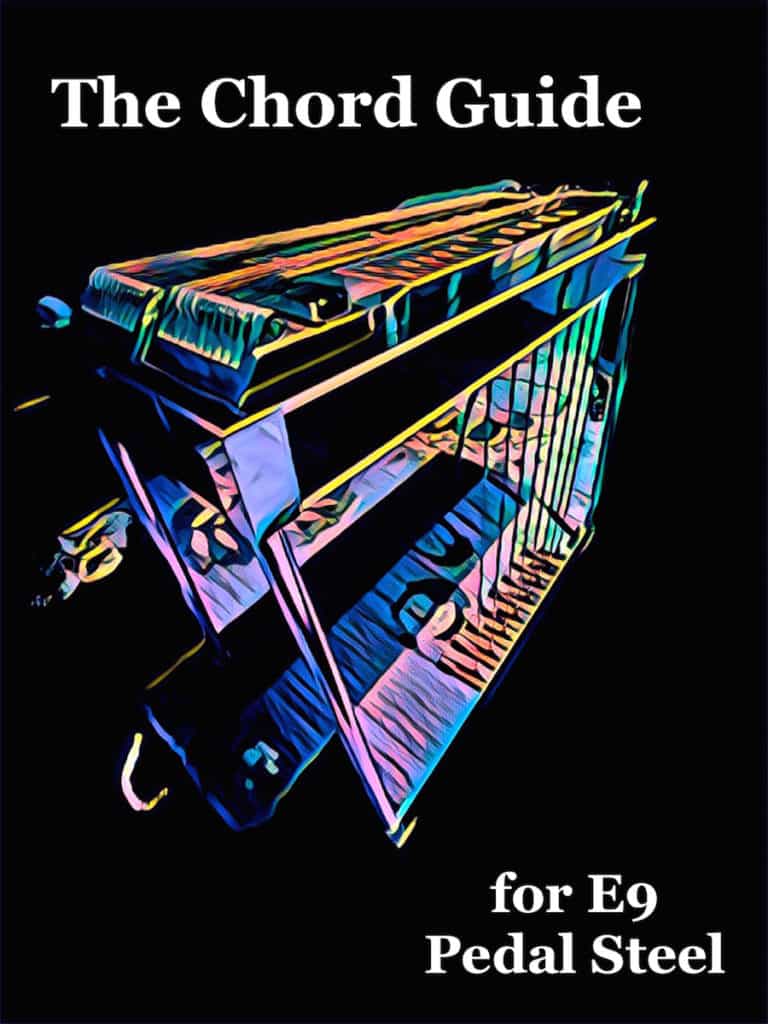
Learn the chords on the E9 neck in a way that makes playing simple and enjoyable…
- Almost Every Chord You’ll Ever Need for E9
- Intuitive and Easy to Use
- Make Use of Pedal and Lever Combinations
- Example Tabs of Chord Movements
- Easily Utilize the Nashville Number System
- Great For Any Key and Style of Music
Includes a bonus section of over a hundred pages of extra chord charts, key references, and more!
You may also like…
200 Country Riffs & Licks for E9 Pedal Steel
Add these country licks to your playing repertoire…
- Easy to Read Format
- Includes Rhythmic Notation
- Playing Over Chord Changes
- Great for Country, Alt-Country, & Honky-Tonk Styles
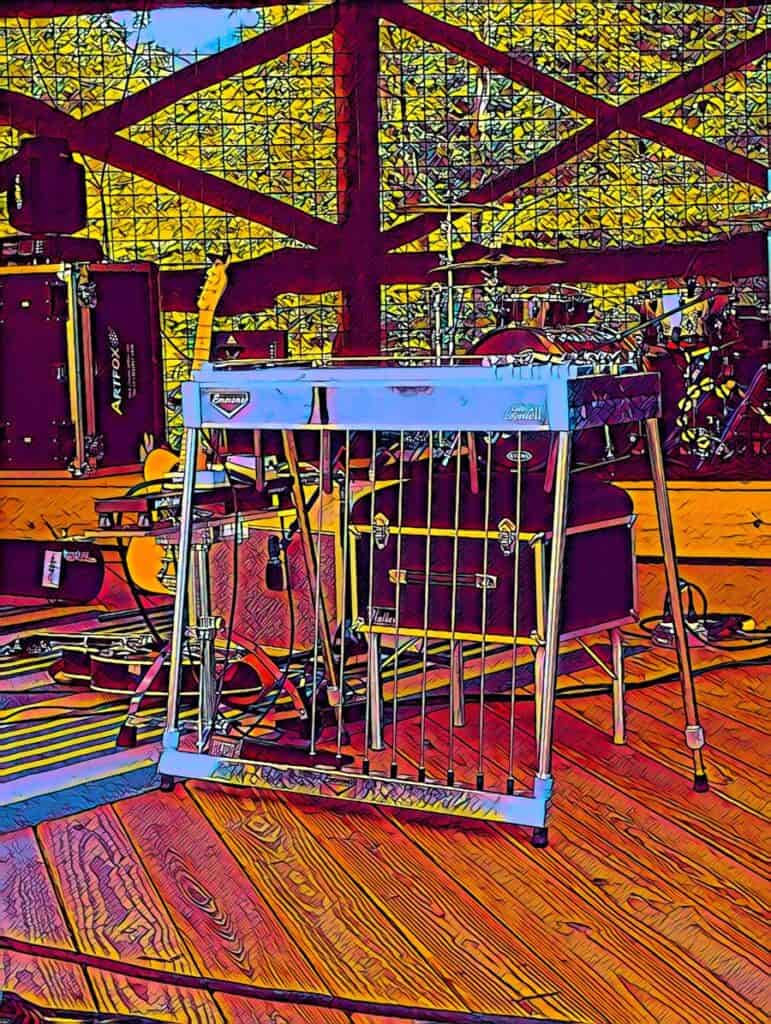

The Scale Book for E9 Pedal Steel
Over 1,000 Pages with Tabs and Diagrams!
- Easy to Use Reference for Practicing
- All Major and Minor Pentatonic Scales, Modes, Major Scales
- All Keys, and Covers the Fretboard
- Includes Pockets of Scales
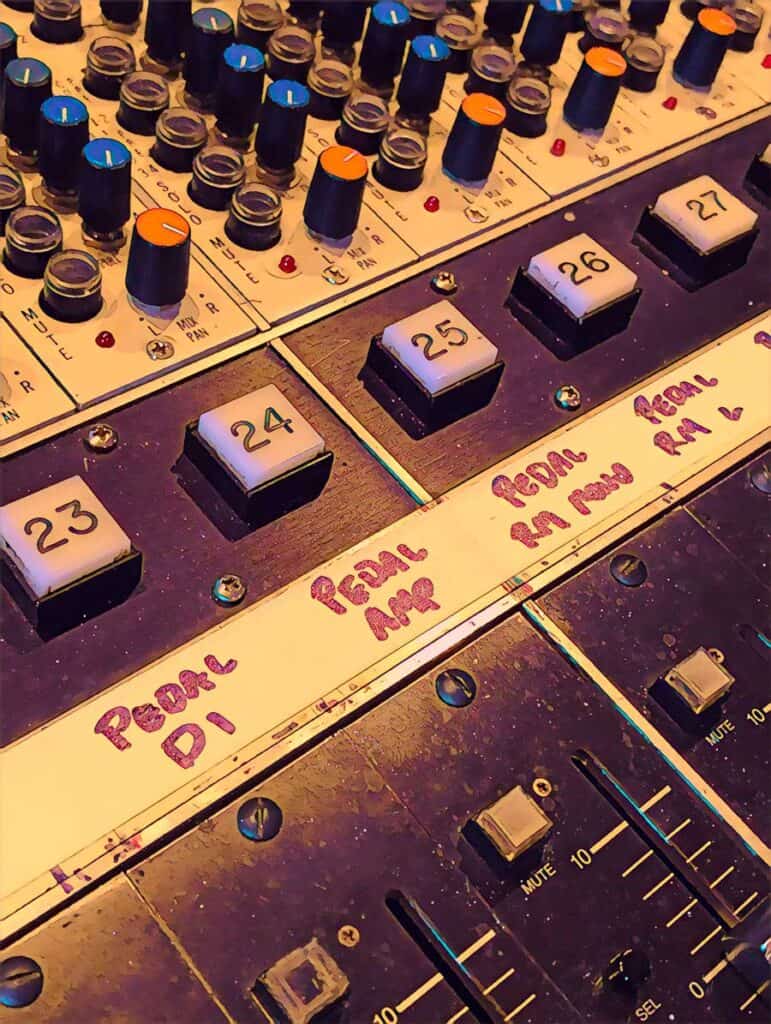
Harmonized 6ths
- Hundreds of Riffs, Licks, and More
- How To Play Sixth Intervals on the E9 Neck – Over Any Chord
- Utilizes The Pedals and Knee Levers
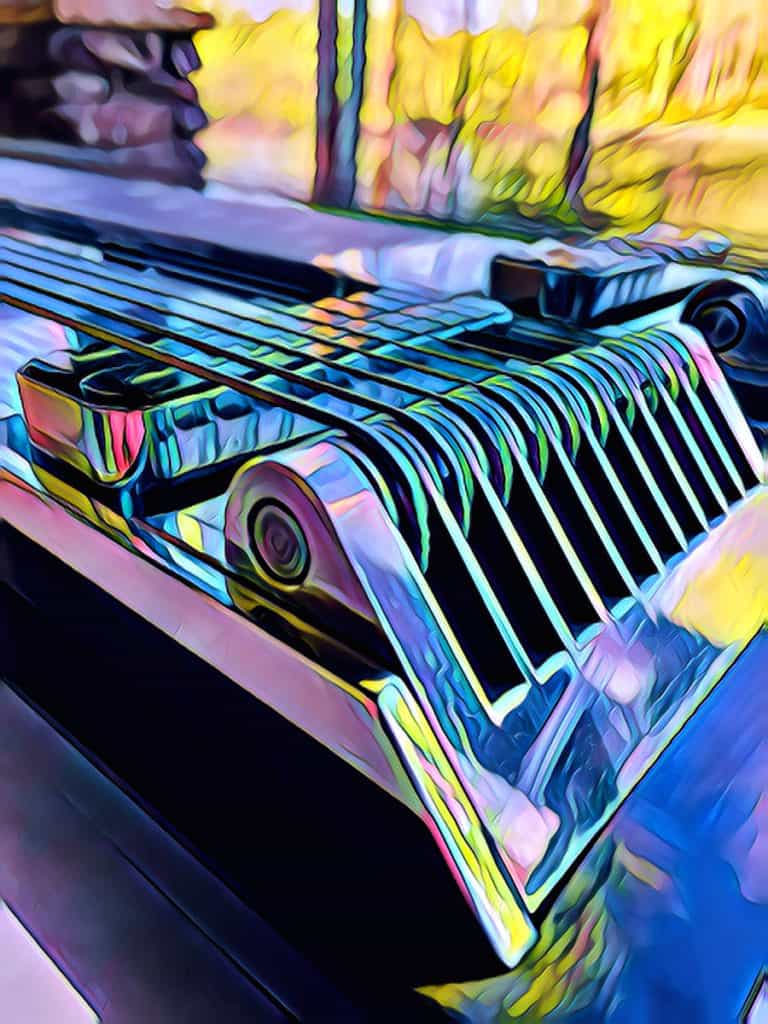
Right Hand Picking & Blocking
- An In-Depth Guide to Picking and Blocking
- Perfect Your Technique
- Includes Graphics, Illustrations, & Practice Exercises
For more playing tips and ideas, check out the page below…
